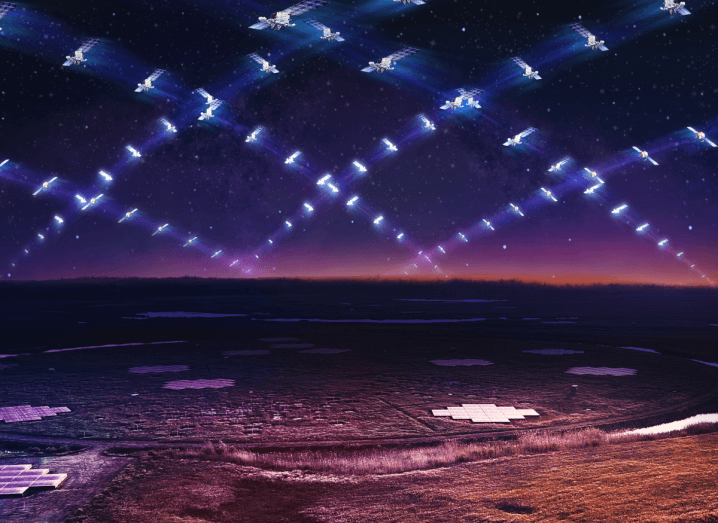The rapid deployment of Starlink satellites, operated by SpaceX, has sparked new concerns within the scientific community. Recent studies show that satellite signals are affecting space observations, with more than 76 million astronomical images impacted. This Starlink space observation interference has triggered a global debate about the balance between technological progress and scientific research.
Astronomers have long relied on ground-based telescopes to study celestial bodies and cosmic phenomena. However, the increasing number of satellites in low Earth orbit (LEO) poses significant challenges for clear and accurate observations. The signals and light reflections from these satellites are distorting images, making it harder for researchers to conduct precise measurements and long-term monitoring.
The Scale Of Starlink Space Observation Interference
The scale of the Starlink space observation interference is unprecedented. With thousands of Starlink satellites already in orbit and thousands more planned, the chances of signal overlap with telescope observations are rising exponentially.
Impact On Astronomical Images
A recent survey revealed that over 76 million images collected by observatories worldwide have been affected by satellite trails. These trails, caused by reflected sunlight or emitted signals, appear as bright streaks across telescope images. For scientists studying faint galaxies, distant stars, or near-Earth objects, even minor interference can compromise data quality and lead to inaccurate conclusions.
Consequences For Research
Research fields such as cosmology, planetary science, and asteroid tracking are particularly vulnerable. The Starlink space observation interference has hindered efforts to monitor potentially hazardous asteroids, observe exoplanets, and analyze the large-scale structure of the universe. This situation has prompted scientists to call for urgent mitigation strategies to protect scientific data integrity.
Why Starlink Is Expanding Despite Concerns
Starlink, developed by SpaceX, aims to provide global broadband internet coverage, especially for remote and underserved areas. This ambition has led to the launch of thousands of satellites in a short period of time. While the service promises major benefits for global connectivity, it has also introduced unexpected challenges for astronomy.
The Benefits Of Starlink Technology
Starlink’s high-speed, low-latency internet service has already proven beneficial for rural communities, emergency services, and even developing economies with limited infrastructure. The system offers an alternative to traditional terrestrial internet solutions, enabling faster and more reliable connectivity.
The Conflict Between Connectivity And Science
The Starlink space observation interference highlights the tension between two important goals: expanding internet access and preserving the clarity of astronomical observations. While improved connectivity can drive economic and social progress, it can also disrupt scientific work critical for understanding space and protecting Earth from cosmic threats.
Mitigation Efforts And Proposed Solutions
Recognizing the problem, SpaceX has introduced several measures aimed at reducing the visual and signal impact of Starlink satellites. However, astronomers argue that these measures are only partial solutions.
Satellite Dimming And Design Changes
SpaceX has experimented with satellite coatings and visors to reduce reflectivity. Some satellites have been redesigned to minimize brightness, helping to decrease the visible streaks on telescope images. Despite these improvements, the sheer number of satellites means that interference remains significant.
Coordinated Observing Strategies
Astronomers are adopting new strategies, such as scheduling observations during periods when Starlink satellites are less visible or using software algorithms to filter out satellite trails. While these methods can reduce the impact of Starlink space observation interference, they also increase operational complexity and costs for research institutions.
Regulatory And International Cooperation
There are growing calls for stronger regulations and international agreements to manage satellite constellations. Policies could include mandatory brightness reduction, limitations on satellite deployment altitudes, or dedicated funding for astronomical mitigation efforts. The goal is to find a balanced approach that allows for satellite-based internet services while safeguarding scientific research.
Long-Term Implications For Astronomy
The long-term implications of Starlink space observation interference extend beyond immediate research challenges.
Potential Data Gaps
If interference continues to increase, astronomers fear that certain datasets will be permanently compromised, affecting studies on climate monitoring, galaxy formation, and even space weather forecasting. Inaccurate data could have far-reaching effects on both academic research and practical applications like navigation systems.
Impact On Next-Generation Telescopes
Large-scale observatories like the Vera C. Rubin Observatory, set to become one of the most advanced survey telescopes in the world, may face operational difficulties if satellite interference is not adequately addressed. The success of such facilities depends on consistently clear skies, free from external signal disruptions.
Global Scientific Collaboration
Astronomy is a highly collaborative field, relying on data sharing across international borders. If Starlink space observation interference is not mitigated, it could strain relationships between scientific institutions and satellite operators, leading to increased calls for global governance of space-based infrastructure.
Conclusion
The rise of satellite megaconstellations, led by Starlink, represents both technological progress and a significant challenge for scientific research. While global connectivity is a worthy goal, it comes with the unintended consequence of Starlink space observation interference, impacting over 76 million astronomical images and threatening the future of space science.
Addressing this challenge requires collaboration between satellite operators, governments, and the scientific community. Mitigation strategies, regulatory frameworks, and technological innovations will all play a crucial role in ensuring that humanity can enjoy both reliable global internet access and a clear view of the universe.
Read More






 Friday, 19-12-25
Friday, 19-12-25







